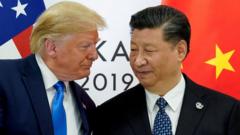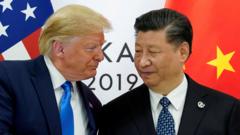Since April 4, 2025, China has implemented a near-total suspension of exports concerning seven types of rare earth metals, alongside powerful magnets made from three of these materials. This drastic measure has triggered significant shortages, threatening the operation of numerous factories in both the United States and Europe. Understanding the need for these metals, the reasons behind China's export halt, and potential future implications is crucial for global markets.
China Halts Rare Earth Exports, Triggering Global Supply Crisis

China Halts Rare Earth Exports, Triggering Global Supply Crisis
Concerns rise as China suspends critical exports of rare earth elements, essential for various technologies, affecting industries worldwide.
Rare earth elements, comprising 17 distinct metals, are often inaccurately dubbed as 'rare' since they exist globally, albeit in insufficient concentrations for efficient mining. Their nomenclature arises from the challenges in separating them; extracting these elements from their natural form can involve over 100 intricate processing stages and substantial quantities of potent acids.
China maintains a dominant position in the rare earth supply chain, accounting for approximately 70% of global mining. In contrast, other nations such as Myanmar, Australia, and the U.S. contribute to the remaining supply. Yet, China leads in the chemical processing of these materials, refining 90% of the world's rare earths, a feat enabled by processing its ore, as well as nearly all of Myanmar's and about half of the U.S. production.
With this halt in exports, industries reliant on these crucial components, such as automotive, tech, and defense sectors, face an urgent need to reassess their supply chains and explore alternative sources as they brace for potential disruptions in production and costs.
China maintains a dominant position in the rare earth supply chain, accounting for approximately 70% of global mining. In contrast, other nations such as Myanmar, Australia, and the U.S. contribute to the remaining supply. Yet, China leads in the chemical processing of these materials, refining 90% of the world's rare earths, a feat enabled by processing its ore, as well as nearly all of Myanmar's and about half of the U.S. production.
With this halt in exports, industries reliant on these crucial components, such as automotive, tech, and defense sectors, face an urgent need to reassess their supply chains and explore alternative sources as they brace for potential disruptions in production and costs.






















